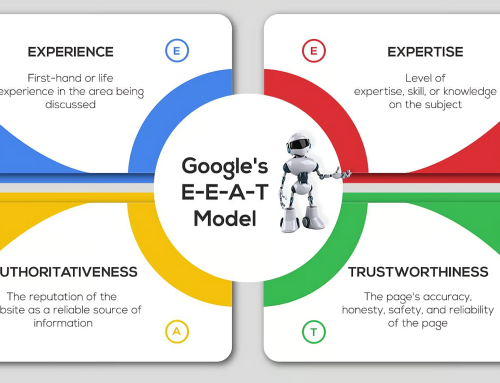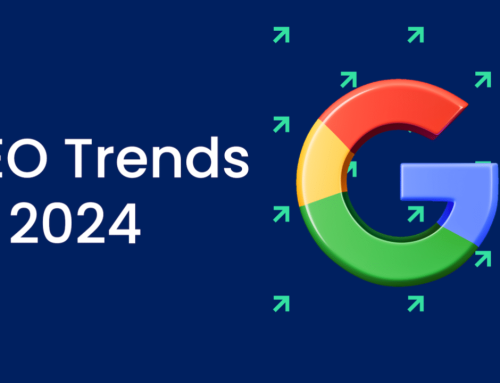It can be a bummer to have your website not showing up on Google search results.
Google drives about 63% of all U.S. web traffic. So if your site isn’t showing up, you’re missing out on a huge opportunity to create buzz, generate online sales, and succeed with lead generation SEO.
Fortunately, many search engine issues are fixable, including your website not showing up on Google. Below, we’re exploring some of the most common culprits, as well as advice for how to get your website on Google and in front of more people.
Why is My Website Not Showing Up in Search Results?
It’s a question we get from clients all the time: I did everything right, but Google won’t display my website. What am I doing wrong?
The reasons your website isn’t appearing in Google usually fall into one of three categories:
- Google can’t find information about your website
- Google doesn’t consider your website relevant
- Your content isn’t connecting with the types of searches you want to rank for
These can be tough pills to swallow. However, they’re not always tough to solve. As part of our enterprise SEO services, we work with businesses to determine the why behind a website not showing up on Google, and from there, the necessary solution. Because once you can pinpoint what the issue is, the fix usually becomes pretty obvious.
How to Get Your Website on Google
Google is notoriously vague about its search algorithms. But we’re not totally in the dark when it comes to figuring out why you have a website not showing up on Google – or how to fix it.
Potential Issue #1: Your Website Lacks “Authority”
If you don’t have domain authority in a given area, you’re not going to show up on a Google search for it.
Authority is based on all sorts of factors – some known, some not. There are two worth considering first though when it comes to a problem like Google won’t display my website: PageRank and URL Rating (UR), both of which have to do with the quality and quantity of links directed to and from your site.
What’s the solution? Create a linking strategy focused on increasing high-value backlinks and internal links. This should improve page authority and tell Google you’re relevant in your field.
Potential Issue #2: You’ve Got Crawlability Problems
Google uses specialized bots called web crawlers to read and analyze your website content. If Google can’t crawl your site, it can’t determine what it’s about – and won’t include it in search results.
Crawlability problems can be caused by slow loading speeds, poor site structure, or endless redirect loops. They can also be built into your site itself, such as with the inclusion of nofollow links or an issue with your Robots.txt file directive.
What’s the solution? Remove any obstacles and clear the path for web crawlers. A good place to start is with your Robots.txt file. Check the file and make sure it says “Allow” instead of “Disallow,” which can make all the difference when it comes to how to get your website on Google.
Potential Issue #3: You’ve Got Indexing Problems
Google indexes your site after it crawls it. This process includes storing and organizing various pages so they’re easily discoverable by search users.
Like crawlability problems, indexing problems can be small issues with big impacts. And if indexing is the reason behind a website not showing up on Google, it’s probably a “Noindex” meta tag that’s to blame.
What’s the solution? “Noindex” tags tell Google they can crawl your site but not index it. Go to Inspect Page Source and search for the term “noindex.” If you find any tags, change to “index.”
Potential Issue #4: Your Website is Too New
Crawling and indexing take time. If your website is new, Google might not have had a chance yet to go through these key processes, and that means you’re not going to see your site in search results.
What’s the solution? Head to Google Search Console and run a URL inspection to find out if and when Google last crawled your page. If necessary, submit a sitemap file to speed up these processes and get your new site on Google’s radar.
Potential Issue #5: Your Website Doesn’t Meet Google’s Core Standards
Google Core Web Vitals are a set of standards that websites must meet in order to rank. These mostly technical measurements are based on things like loading performance, interactivity, and visual stability, so a website that is too slow to load or too difficult to navigate likely won’t excel in its search ranking.
What’s the solution? Use a tool like WebPageTest.org to assess your page performance against Google Core Web Vitals. You can test based on custom metrics, or run a general test for a quick overview of what you’re doing right and where you need improvements.
Potential Issue #6: You’ve Got Content Problems
If you come to us for global or local SEO services, you’ll learn very quickly just how much of a value we put on content. And it’s for good reason, since your content is critical for ranking on Google.
These problems can be related to the relevance of your content, the originality of your content, or the delivery of your content. Figure out the exact issue and you can move forward from there.
What’s the solution? If relevance is the issue, update current content and create new content that’s better aligned with search intent. If it’s originality, you may have duplicate content on your site and need to redirect or canonicalize duplicate pages. Delivery is a bit more complex, but could include targeted steps to minimize server response times, prioritize critical resources, and/or stabilize page layout.
Potential Issue #7: You’re Targeting Difficult Keywords
Keywords are integral to your Google ranking. They can also be incredibly difficult to rank for, doubly so if you’re targeting keywords with incredibly high competition and are up against multiple high-authority sites also trying to rank for those terms.
What’s the solution? Design a keyword strategy with a mix of high and low competition terms. Then target some “low hanging fruit,” i.e. easy-to-rank-for terms that’ll give you quick wins in terms of rankings.
Potential Issue #8: You Have a Google Penalty
It’s not typical that the answer to Google won’t display my website is that you’ve been penalized by the search engine giant, but it’s not impossible either. Google gives out manual and algorithmic penalties for lots of reasons, and any of them could explain why your website isn’t showing up.
What’s the solution? Check for penalties in Google Search Console, and if you find one, consult with an SEO agency to find out if you can have it removed.
Final Thoughts
A website not showing up on Google is a big problem for a brand. That’s why it’s important to fix technical issues, understand your competition, and have strategies in place for overcoming challenges and better targeting keywords.
Think of how to get your website on Google like playing a video game. Winning the game takes time and effort. And it might also require you to get a bit savvy, especially if you hit a roadblock.
Our recommendation: be persistent, and seek assistance when needed. Google’s smart, but you’re smarter – and there’s almost always a way to work within the system and get your page ranking where it belongs.

